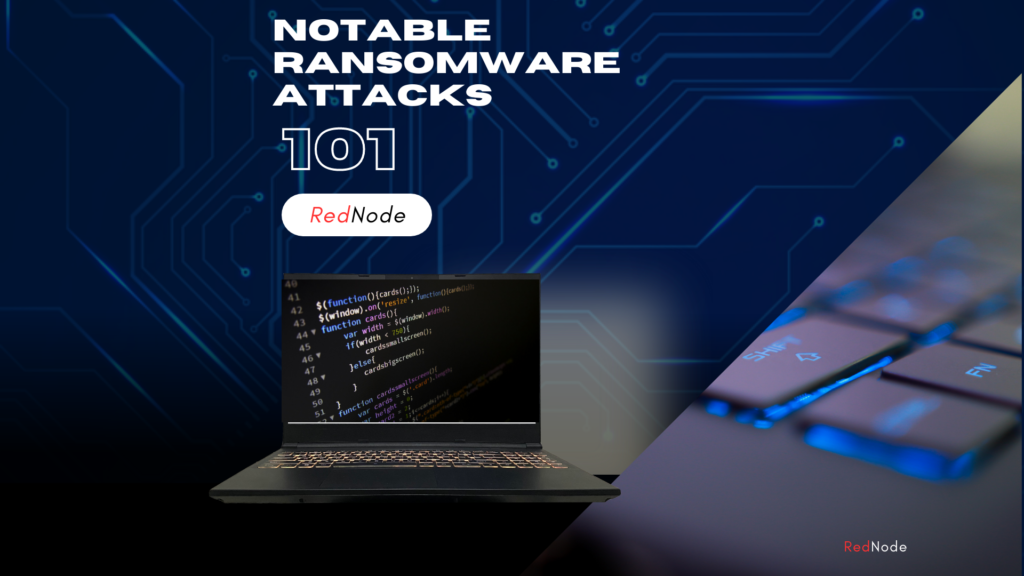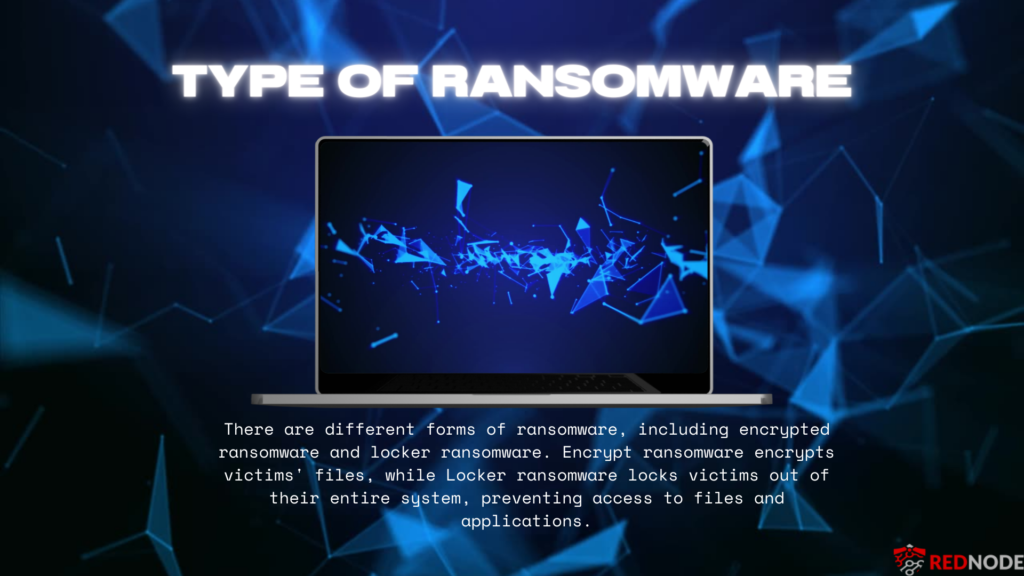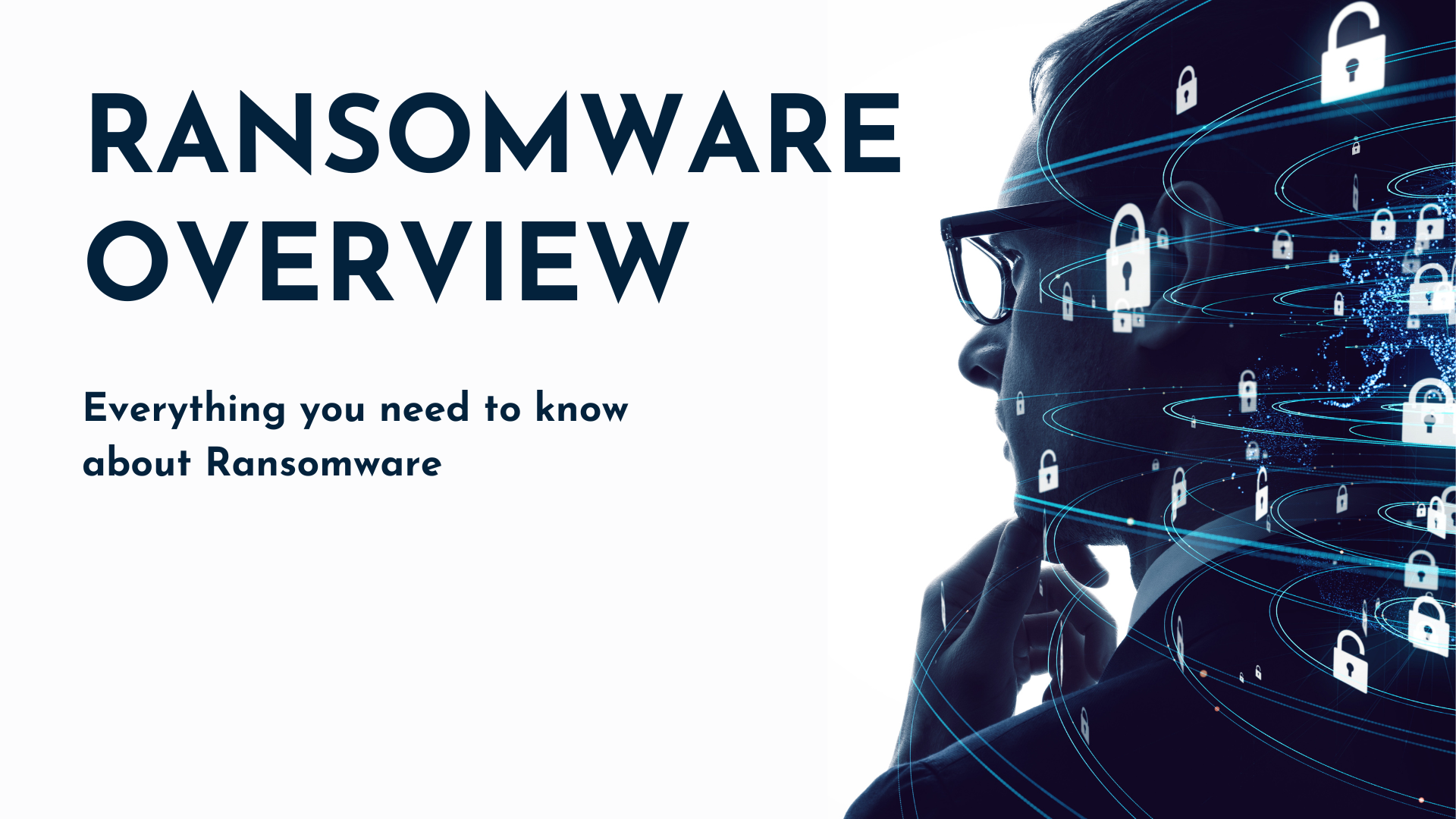Ransomware is a type of malicious software (malware) designed to encrypt files on a victim’s computer or network, making them inaccessible. The attackers then demand a ransom, usually in the form of cryptocurrency, in exchange for decrypting the files and regaining access.
Ransomware is usually spread through email attachments, malicious links, or by exploiting vulnerabilities in software or operating systems. Once it infects a system, it encrypts files using a strong encryption algorithm, making them unusable without the attackers having the decryption key. The victim is usually presented with a ransom note explaining how to pay the ransom and regain access to their files.
Table of Contents

Type of Notable Ransomware Attacks
Here are some notable real-life ransomware attacks, along with some key lessons learned from each incident:
WannaCry (2017):
WannaCry is one of the most notorious ransomware attacks to date, affecting tens of thousands of computers worldwide
It exploited a vulnerability in Microsoft Windows systems known as EternalBlue, which was not patched on many affected machines.
Lesson Learned: Applying security patches and updates promptly is critical to prevent exploits of known vulnerabilities This highlights the importance of maintaining regular software updates and strong cyber security measures.
NotPetya (2017):
NotPetya was initially disguised as a ransomware attack but was later revealed to be a destructive wiper malware disguised as ransomware.
It initially targeted companies in Ukraine but spread globally, affecting many multinational companies
Lessons Learned: NotPetya emphasizes the need for robust incident response and disaster recovery planning. This emphasizes the importance of testing offline backup and recovery methods to mitigate the impact of destructive malware.
Colonial Pipeline Attack (2021):
The Colonial Pipeline attack disrupted the operations of one of the largest fuel pipeline systems in the United States.
Attackers used dark-side ransomware to encrypt company systems and demanded a ransom.
Lessons Learned: Critical infrastructure sectors like energy must prioritize cybersecurity and adopt a multi-layered defense approach. The incident highlights the importance of proactive threat intelligence, network segmentation, and continuous monitoring to immediately identify potential threats and respond promptly.
JBS Foods (2021):
JBS Foods, one of the world’s largest meat processors, has been hit by a ransomware attack, causing the temporary shutdown of multiple production facilities worldwide.
Ransomware group REvil was identified as the culprit behind the attack.
Lessons Learned: Ransomware attacks can have significant implications for supply chains and critical industries. The incident highlights the importance of strengthening cyber security measures across the entire supply chain, including suppliers and partners.
These examples demonstrate the far-reaching consequences of ransomware attacks and emphasize the need for organizations to invest in strong cyber security systems, maintain up-to-date software and security patches, perform regular backups, educate employees about phishing and malicious links, and deploy incidents. Response plans to mitigate the impact of such attacks.

Types of Ransomware:
There are different forms of ransomware, including encrypted ransomware and locker ransomware. Encrypt ransomware encrypts victims’ files, while Locker ransomware locks victims out of their entire system, preventing access to files and applications. There are different types of ransomware, each with its characteristics and methods of operation. Here are some types of ransomware:
- Encrypting ransomware: This type of ransomware encrypts the victim’s files, making them accessible without the attackers having the decryption key. Examples of encrypting ransomware include CryptoLocker, Locky, and WannaCry.
- Locker ransomware: Locker ransomware locks the victim out of their entire system, preventing access to files, applications, and sometimes even the operating system. Unlike encrypting ransomware, Locker ransomware does not encrypt files but rather restricts access to the system. A notable example is police-themed ransomware, which displays a message claiming to be a law enforcement agency accusing the victim of illegal activity.
- Master Boot Record (MBR) ransomware: This type of ransomware infects the victim computer’s master boot record, which is responsible for the booting process. By modifying or encrypting the MBR, ransomware prevents the operating system from loading properly, effectively rendering the system unusable. Petya and Satana are MBR-type ransomware.
- Mobile ransomware: Mobile ransomware targets mobile devices. It is usually spread through malicious apps or compromised websites. Once installed, mobile ransomware can lock the device, encrypt files or restrict access to certain features or data. SLocker and Android/Filecoder.C are examples of mobile ransomware.
It is worth noting that new forms and techniques are constantly evolving as cybercriminals adapt their methods. Being vigilant, updating software, using strong security practices, and keeping regular backups are crucial to reducing the risk of falling victim to ransomware attacks.
Methods used by attackers to deploy ransomware
Attackers use a variety of methods to deploy ransomware and launch attacks. Here are some common methods they use:
- Phishing emails: Attackers often send phishing emails that appear legitimate and trick recipients into clicking on malicious links or downloading infected email attachments. Once executed, the ransomware is deployed on the victim’s system.
- Malicious websites and exploit kits: Attackers can create or compromise websites to host exploit kits. These kits scan visitors’ systems for vulnerabilities in software or browsers and, if found, exploit those vulnerabilities to deliver ransomware to the victim’s computer.
- Remote Desktop Protocol (RDP) exploits: Attackers look for open or poorly secured Remote Desktop Protocol connections. They try to gain unauthorized access to the victim’s system and then install ransomware.
- Malvertising: Malvertising involves placing malicious advertisements on websites. Clicking on such ads may redirect users to websites that host ransomware or trigger the automatic download of malware to the victim’s system.
- Drive-by downloads: Attackers exploit vulnerabilities in web browsers, plugins, or other software to silently download and install ransomware on a victim’s computer when they visit a compromised or malicious website.
- Watering Hole Attacks: In this technique, attackers compromise websites frequently visited by their intended targets. By injecting ransomware into these legitimate websites, they can infect the systems of targeted individuals or organizations.
- Remote file-sharing services: Attackers can exploit vulnerabilities in cloud-based file-sharing services or compromise user accounts to upload infected files. When victims access or download these files, the ransomware is executed on their system.
- Malicious USB drives: Attackers can intentionally drop infected USB drives in public spaces or directly target individuals by sending malicious USB drives. When the victim plugs the drive into the system, the ransomware is executed.
- Exploiting software vulnerabilities: Attackers look for vulnerabilities in software, operating systems, or network devices Once they discover a vulnerability, they exploit it to gain unauthorized access and then deploy ransomware on compromised systems.
- Ransomware-as-a-service (RaaS): Some attackers offer ransomware-as-a-service, where they create and distribute ransomware to other individuals or groups. These “affiliates” carry out the attacks, while the original creators receive a portion of the ransom money.
It is important to note that the methods used by attackers continue to evolve as they find new ways to exploit vulnerabilities and deceive their targets. Organizations and individuals should adopt robust cybersecurity practices such as regular software updates, employee education about phishing awareness, and strong security measures to reduce the risk of falling victim to ransomware attacks.
Practices to Prevent Ransomware Attacks
Protecting against ransomware requires a combination of proactive measures and cybersecurity best practices. Here are some important steps to protect against Ransomware attacks:
Regular Backup Data: Implement a robust backup strategy to create regular backups of important data and ensure they are stored securely. This will allow you to recover your files if they are encrypted or inaccessible due to a ransomware attack.
Keep software updated: Keep your operating system, software applications, and plugins up to date by installing the latest security patches and updates. Many ransomware attacks exploit known vulnerabilities, so regular updates help protect against these vulnerabilities.
Use antivirus and anti-malware solutions: Install reputable antivirus and anti-malware software on all devices and keep them up to date. These security tools can help detect and block ransomware infections.
Be careful with email attachments and links: Be careful when opening email attachments or clicking on links, especially from unknown or suspicious sources. Verify the authenticity of the sender and be careful even with seemingly legitimate emails Beware of unexpected attachments or requests to enable macros in documents.
Enable macro and script blocking: Configure your email client and Office applications to block macros from running automatically. Most ransomware attacks rely on macros or malicious scripts to execute their payloads.
Use strong, unique passwords: Assign strong passwords or passphrases to all accounts and avoid reusing passwords across platforms. Consider using a password manager to safely store and create complex passwords.
Enable Two-Factor Authentication (2FA): Implement 2FA or multi-factor authentication wherever possible. This adds an extra layer of security by requiring an additional verification step beyond just a password
Secure Remote Desktop Protocol (RDP): If you use RDP, make sure it is properly secured. Use strong passwords, enable network-level authentication, and consider restricting RDP access to specific IP addresses or using a virtual private network (VPN).
Educate employees: Provide regular cybersecurity awareness training to employees, teaching them how to recognize phishing attempts, suspicious links, and email attachments. Encourage a security-aware culture and reporting of suspicious activity.
Limit user privileges: Follow the principle of least privilege, giving users the minimum access needed to perform their tasks. This helps mitigate the impact of ransomware by limiting the spread of infection.
Network Segmentation: Divide your network into separate segments, with limited access rights between them. This can help contain the spread of ransomware and limit the potential damage it can cause.
Implement intrusion detection and prevention measures: Use intrusion detection and prevention measures to monitor network traffic and detect any malicious activity or indicators of compromise related to ransomware attacks.
By implementing these preventative measures and maintaining a strong security posture, you can significantly reduce your risk of falling victim to ransomware attacks and minimize their impact if they do occur. Regularly reviewing and updating your security practices is essential to keep pace with evolving threats.
In conclusion, ransomware is a significant threat to individuals, organizations, and critical infrastructure worldwide. This is a type of malware designed to encrypt files and hold them hostage until a ransom is paid. Real-life ransomware attacks such as WannaCry, NotPetya, Colonial Pipeline, and JBS Foods have demonstrated the massive impact and financial loss these attacks can cause.
To protect against ransomware, it is crucial to implement a multi-layered approach to cyber security. These include regularly backing up important data, keeping software and systems up to date, using reputable antivirus and anti-malware solutions, being wary of email attachments and links, employing strong and unique passwords, enabling two-factor authentication, Securing remote access protocols, educating employees about cybersecurity best practices, limiting user privileges, implementing network segmentation, and using intrusion detection and prevention systems.
Furthermore, organizations must prepare for incidents by developing robust incident response plans and disaster recovery strategies. Regular training and awareness programs should be conducted to ensure individuals understand the risks and how to respond to potential ransomware threats.
Contact RedNode to protect your business from Ransomware or any type of cyber threat.

